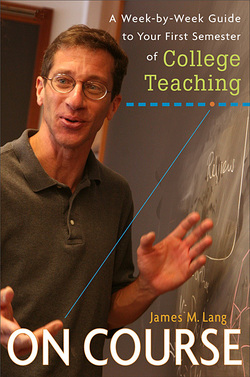
I once heard a social scientist remark that no one attempts to scientifically study social behavior unless they are one consultation away from a diagnosis of autism; as a consequence, all professors require assistance when it comes to socializing and empathizing with others. Perhaps the social scientist overstated the situation. But it is true that graduate students and young assistant professors represent a thin slice of academia, and that the skills that make them nascent researchers may interfere with their ability to relate basic aspects of their discipline to college students.
James M. Lang's On Course seeks to elevate first-time attempts at college teaching. The book proceeds with a practical guide to common first-time problems: constructing a syllabus, using technology, planning and delivering lectures, hosting discussions, working in small groups, and much more. At each stage, he offers concrete ways of approaching common problems, and suggests various rationale for making decisions about the predicament at hand. For example, when discussing student learning, Lang argues that understanding Piaget's mental models and William Perry's theory of intellectual development can provide a teacher with ways of listening to a student's troubled reaction to classroom material; theories of learning can also help a teacher take action to improve student learning, depending upon cues students offer. Why are these specific examples helpful? Because in offering the examples, Lang provides a rationale for teacher behavior, and footnotes their attention to additional literature; this is the apt way to convince a researcher that they are operating on solid ground when interacting with college students.
Lang explicitly structures the book so a teacher can read a chapter per week; if the teacher begins reading the book at the start of the semester, the chapters will generally align with problems that often crop up during particular phases of an academic season. Thus, Lang provies intermittent brain food. This is an important feature for time-strapped instructors. Lang writes with friendly confidence--he offers to serve as the angel on the shoulder, guiding instructors towards best practices as understood in the academic literature on teaching. Without sneering at non-tenure track instructors, he offers measured advice on managing a teaching-research balance for those seeking a permanent faculty position.
On Course states up front that it does not provide the final word on 'best practices' in college education, nor does it offer an explicit philosophical argument regarding the purpose of a university education. Instead, the book serves as an academic survival guide. It can improve the first-semester experience for instructors--and more importantly, it can improve the experience of their students.
 RSS Feed
RSS Feed